You can keep pretending there isn’t an elephant in the room, but the truth is, there IS an elephant in the room!
-From the Soul Sisters, Jan & Jeanne
You can keep pretending there isn’t an elephant in the room, but the truth is, there IS an elephant in the room!
-From the Soul Sisters, Jan & Jeanne
“I remember the moment in my recapitulation when I realized that the story I’d always told myself about my life was utterly false. That’s the shattering moment of surrender to the truth.” Quote from Jan Ketchel during a recent morning discussion.

– Photo by Jan Ketchel
We are a story loving species. Can’t get enough of a good story. Our days are spun into archetypal dramas that draw us like moths to a flame. And when we encounter the unknown in our daily lives, our thoughts rapidly fill in the blanks, hand us a plausible explanation, a reality to uphold, the fictional novel of our life and times.
In 1931, in one of his Vision Seminars, Jung described a patient’s vision: “I looked into his eyes and saw therein a great river full of writhing bodies. A few men stood upon the bank and called with a loud voice to the struggling masses in the rushing water. The water cast a few souls upon the bank. Then the men who stood there lifted them up and showed them a star and a sun. This I saw in the eyes of the old man. The old man said: “You have perceived” and he sank into the earth.”
This vision reveals the possibility of true perception, simply what is beyond the veils of our stories. Jung interpreted the river of writhing bodies as, “Like the wheel in Buddhistic philosophy, death and rebirth, the curse of that eternal illusory meaningless existence. In this vision we find the same principle as in Buddhism, the consciousness of what is happening as a redeeming principle.”
Jung goes on to say: “…that river only makes sense if a few escape and become conscious, that the purpose of existence is that one should become conscious. Consciousness redeems one from the curse of that eternal flowing on in the river of unconsciousness.”
Jan’s opening quote about her detachment from the novel of her life, as it devolved into the collapse of the world she had always known, landed her into the bowels of truth that ultimately released her from the current of unconsciousness, spitting her out upon the shore to become a riverwalker, one who walks along the river’s edge consciously grounded in the truth.
Consciousness is pure perception. Consciousness is life outside the story. Total acceptance of what is, of what was, is the bridge beyond the confines even of the story of time. Timelessness is infinity, and freedom from story releases us to perceive all that is beyond story time. In Buddhism this state is known as diamond mind, the true nature of mind.
The Shamans of Ancient Mexico called this state inner silence, the springboard to infinity. For them the storyteller within is the incessant internal dialogue that interprets, that is, puts into story format all that we encounter. Freedom from the mesmerizing spells of the internal dialogue is both simple and the hardest thing to achieve.
Suspend judgment, the Shamans recommend. You don’t have to stop the story, but with consciousness you simply acknowledge what it is—a story—and cease to give it attention. You step outside the river, the current of thought, label it for what it is, and like Buddha, don’t attach. Simply perceive what is, beyond story.
Riverwalking,
Chuck

like this double shadowed being!
– Photo by Jan Ketchel
If you break it down, the term “un-conscious” is just that—all that we are that we are simply not aware of.
Ego is that part of us that we are aware or “conscious” of. Hence, ego and unconscious comprise the sum of all that we are, the known and the unknown.
Freud was able to prove that disturbing parts of who we are can be pushed out of awareness into the unconscious through a defense mechanism he called repression. Jung subsequently discovered that other parts of who we are, that go deep into our ancestry and phylogenetic heritage, reside in what he called the collective unconscious. These parts appear in dreams, visions, and fantasy and may powerfully influence the quality and behavior of our lives. Jung further discovered that the collective unconscious eventuates in infinity and houses the spirit side of who we are.
Entity can be defined as an autonomous character that is active in the unconscious part of who we are. For a variety of reasons it comes to the surface of our conscious minds and challenges the ego to contend with its will and message.
An example of this might be a conscious personality that sees itself as peaceful and loving suddenly seized by a powerful emotion of rage and unpleasant thoughts as regards a friend or family member. Perhaps in a dream that night an acquaintance they haven’t heard from in decades is encountered. When they amplify the dream by recalling the personality of the dream character, the image of an aggressive bully comes to light, someone they never felt comfortable being around in their youth.
In this example the ego is confronted with a challenge. This exaggerated bully character is certainly a hard one to “own” as a part of one’s own self. This character hardly fits the definition of one’s conscious values and how one knows oneself. However, the problem that has arisen is that one’s own ego is struggling to accept that something has irritated it and that it has an aggressive reaction to someone close to them. This is simply incompatible with how one sees oneself!
The tendency might be to see the appearance of that childhood bully in the dream as a reminder of an evil entity that tried to take possession of the ego and force it into hateful, rageful feelings and thoughts. The strategy may then call for disowning the anger and turning instead to loving thoughts for one’s close friend or family member.
However, a more astute and honest reflection might reveal that the ego has had too narrow a definition of itself, seeing itself only as positive and softly loving, disavowing the stronger and more assertive side of itself. As a consequence, the dream image of the bully may have arisen from the unconscious as a character who could balance out the extreme one-sidedness of the conscious attitude of lovingness with an equally one-sided attitude of aggressive behavior. In this scenario, the unconscious entity compensates for the ego’s imbalance, demonstrating to it the results of its narrow definition of itself, presenting it with the far greater depths of who it really is.
Taken this way, the ego is offered the opportunity to drop its false pretenses of an all-loving being and make peace with its, at times, aggressive reactions. The ego, upon further reflection, might discover that its aggressive reaction to a loved one might in fact be the most appropriate reaction to have, as that person might be taking excessive advantage of one’s loving and giving attitude and require a boundary!
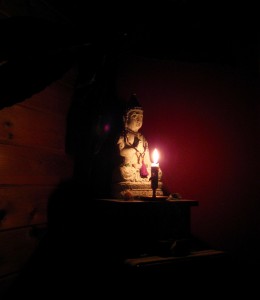
– Photo by Jan Ketchel
Of course, if the ego is fully honest with itself it might have to admit that the outer problem probably arose in the first place because the ego felt too uncomfortable with confrontation and sought refuge in its one-sided definition of a loving self, a definition way too narrow to encompass the fuller definition of one’s true Self.
Thus, when ego encounters an entity within, it first does well to question what might have given rise to this entity at this particular time. Before casting out the devil, make sure the devil isn’t the Self in disguise!
Reflecting,
Chuck
** Please note that last week’s blog is now also available for viewing: Orgasm As Divine Encounter
At a certain level of reality, I and We become One. Growth might be defined as an ever-expanding realization of our essential Oneness. In the meantime, we grapple with the discovery, ownership, and coordination of our many parts.
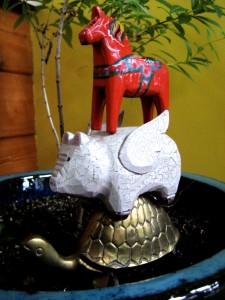
– Photo by Jan Ketchel
Within the self of every “individual” are many parts: some known, many unknown, and still others disowned. Psychology has coined the terms conscious and unconscious to differentiate between those parts that we know about from those that we don’t know about but also are.
At the center of the known self—the seat of consciousness—is the ego. The ego has many “parts,” including the “face” it shows the world, called the persona, as well as a younger child state, and an adult state. Each of these parts has its own ambitions, needs, and motives. Being conscious “parts” allows each of these centers to have relative accessibility to awareness. That is, we are basically familiar with these states of being. They may, and often do, squabble among themselves.
For instance, the persona—the actor that we present to the world—often sees itself as the true self. The fact that I am a psychotherapist is indeed a real part of me, however, it is not the whole of who I am.
In another example, the adult ego, with its capacity to plan, organize, and make things happen, may trump the needs and desires of its child part, who wants to play.
The permutation of struggles at the ego level alone are staggering, particularly when the parts become tricksters in their maneuvering.
Trickster is a character who has an ulterior motive, a secret ambition or intention that powers its behavior. Trickster has little interest in fairness, cooperation, or consciousness. It’s goal is to get what it wants.
Trickster may be intelligent and cunning, or foolish and obvious, but trickster definitely does not play by the rules. Nonetheless, if we are willing to slow down the action and reflect, the trickster in all our conscious parts can be identified and a resolution to contradictory motives becomes possible.
However, when we approach the depths of the unconscious mind the plot thickens, as trickster can allude all but a very determined introspection.
The unconscious mind, all that we don’t know of who we are, is composed of countless layers. The uppermost region houses all that once was conscious but for a myriad of reasons has been erased from conscious awareness. Here we find many traumatic experiences, as well as parts of the ego-potential deemed unworthy of development.
Traumatic parts have a life of their own and often function as tricksters bent on being discovered by the conscious mind. For instance, a news item on TV might trigger an intense emotional overreaction, brought on by a traumatic memory insisting on being consciously redeemed.
Similarly, rejected ego parts—forming what Jung called the shadow—may function as tricksters by projecting a compelling but distorted perception onto the motives of a friend or foe that actually reflects the true feelings of the rejected inner part but completely distorts outer reality.
As we go deeper into the unconscious mind we encounter what Jung called the anima/animus parts, the contrasexual components of the psyche, unrealized at a conscious level. These parts have their trickster ability to project themselves in powerful attractions to people in the world that distort completely who they really are. These trickster entrapments form the core of many troubled relationships.
At the center of the unconscious mind is the Self, the CEO of the entire psyche. The role of the Self is to establish balance in the entire psyche—conscious and unconscious. The Self is the higher power of the psyche. Ideally, the ego center of the conscious personality will subordinate itself to the dictates of the Self, which has the interests of the greater whole in mind.
Unfortunately, the ego often takes on its own trickster side, subverting the true needs of the Self, using all its power for decision and free will to accomplish its own aims.
If the imbalance thereby generated is too extreme, the Self counters with its own trickster side and generates symptoms of fear in the ego, such as an agoraphobia, where the ego can’t leave the house. To rein the ego in, the Self can also create psychosomatic symptoms, such as panic attacks or physical illness, to interfere with the ego’s willfulness.
The Self might also generate dreams that preempt the ego’s control through a terrifying nightmare that restores the waking ego to humility.
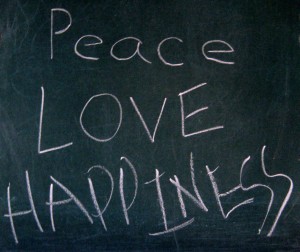
– Photo by Jan Ketchel
The difference between Self as trickster and all the other personality parts as trickster is its selfless intentions. The Self seeks unity and balance as its aim. When the other parts of the personality employ the trickster, it generally reflects a power play to meet individual needs, often at the expense of the greater needs of the overall Self.
The Self is only forced to become the trickster when the ego refuses to listen to its guidance. When the ego, like a good General, looks to the Self as Ruler, the Self responds with supportive guidance, energy, and freedom from symptoms.
So, trickster to trickster, stay in alignment with the Self, a much smoother ride to wholeness!
Bumping along,
Chuck
Before sleep I call upon Robert Monroe, great out-of-body explorer and author of several books as well as guided meditations on the subject. “Will you take me on as your apprentice?” I ask. Before long I am asleep and dreaming.
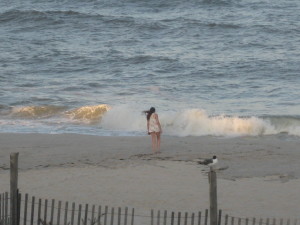
– Photo by Jan Ketchel
I stroll along a boardwalk. On my left side is an endless row of doorways to video arcades, to adventures and games, places to learn and test skills. On my right is the ocean, dark and brooding.
I pop into one arcade after another, through wide doorways into big rooms, through narrow doorways, no wider than a sheet of paper, into rooms equally narrow. All doorways are accessible; no matter how thin, I simply slip in. I have many adventures in these various rooms, partaking in games of skill, learning how to manipulate and master everything that comes at me.
Every now and then I step back out onto the boardwalk and walk out onto the beach and step into the waves of the ocean. As opposed to the busyness of the arcade scene, all is calm and quiet here. I am calm and at ease here too.
All night long, while I dream, I partake in life along the boardwalk and in the arcade rooms. I play all the games. I am enticed, challenged, gain insights, skills, and a sense of power and prowess, and yet it all soon becomes repetitive and boring. At the end of the night, just before I wake up, I walk one more time out to the ocean’s edge and realize that this is what matters, this is what’s meaningful, this is the whole point of everything. I wake up in utter calmness.
The boardwalk is the path through life. We make many trips along that boardwalk, through many lifetimes, selecting how we want to live, being drawn here and there, walking the narrow planks over and over again.
The arcade rooms represent the many adventures we have, the choices we make to play one game or another, the things we are challenged with and the things we learn. Here all the desires, the wantings, the needs, the things of this world that we find so enticing are supplied, encountered, and experienced.
The ocean is the Great Unknown Known. I call it this because although it is dark and brooding and hard to see what lies in its depths, we sense such affinity with it. There is familiarity in its mystery and we are constantly drawn to it. We are drawn there by the High Self, our spirit urging us to discover what it offers, just as I was drawn in my dream. We go to it throughout our lifetimes, perhaps not as often as we go to the arcade rooms, but often enough that we all have a sense of its presence and significance in our lives.

– Photo by Jan Ketchel
Our sense of familiarity with it, hard to pinpoint at first, becomes more realized as we get to know it better. For some, the unconscious, that Great Unknown Known, is frightening. To others it is calming though still mysterious. It will remain a mystery until we dive deeper into its depths and discover what it holds for us. Once we have gone into its depths enough times we gain a certain prowess and ease, equal to that which we gain in the reality of this world, as we engage in it, walking the boardwalks of our many lifetimes.
The more we explore the ocean, the more we feel its resonance, its energy so like the energy of our spirit. The more we enter it the more we gain a certain prowess in its waters. We might even experience the great depths of calm that came over me at the end of my dream as we dive deeper into the mysteries of the inner self. Even as we become calm in its waters, we are also aware that we have still much to learn, as its mysteries are endless. It is the vastness of infinity, and just that, infinite.
Each time I took a break from the arcade rooms and stepped into the ocean in my dream calmness came over me, and yet I always went back to the boardwalk and the arcades. By the end of the night, however, I got the message. It’s not the boardwalk and the endless supply of games, one more bedazzling, enticing and challenging than the next, but the deep and broody ocean that is important. It is where our spirit takes us over and over again. Our spirit knows it’s what we are really seeking, and that it offers all the adventure we really need.
The ocean, the Great Unknown Known, is the big draw. It offers the wonder and mystery of what lies beyond the boardwalk, beyond this world, enticing us to discover it for ourselves, asking us to test its waters as eagerly as we jump into another arcade game.
In the end it’s the balance between the two that we seek. We must let ourselves fully experience what the boardwalk offers, on both sides. We must fully live in this world, the arcade rooms, but also fully avail ourselves of the world of the Great Unknown Known. And that really means that we soon discover that it is not so unknown at all, but just another part of who we really are.
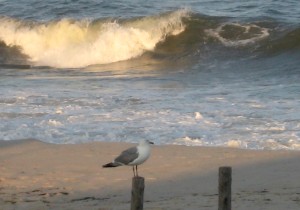
– Photo by Jan Ketchel
There are many ways to go to the ocean every day, in sitting calmly, in simply breathing, in meditation, in just being, in refusing to do what we might normally feel we must do, in what the shamans call “not doing.” In “not doing” we refuse to go into the arcade rooms. Instead, we go to the other side of the boardwalk, slip into the ocean for a moment or two and wait for it to show us something. You too might ask for Robert Monroe’s help. I think he’s out there waiting.
For now, we must return to the boardwalk because that’s where we live, but the ocean is always right there.
Not doing,
Jan